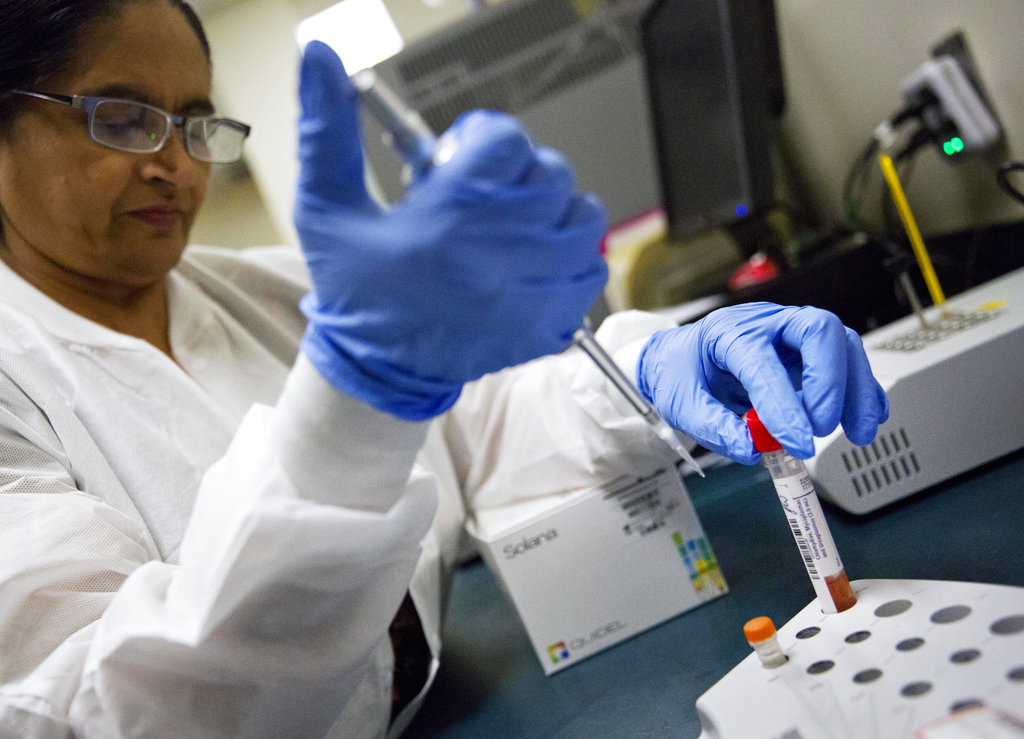This flu season is the worst in 10 years, according to the Centers for Disease Control.

The particular flu strain affecting Americans this year is called H3N2, a type of A-strain. Nurses and doctors were aware that specific strain was going to affect our country this season because they studied Australia’s winter.
“Their winter season is the opposite of ours, and they had a high occurrence of H3N2,” said Tracy Dieterle, a nurse practitioner at St. Thomas’s Health Services department. “Unfortunately that does not give us enough time to change the vaccine, so that’s why we are having a higher prevalence throughout the U.S. as well as here in Minnesota.”
Dieterle has another theory as to why Minnesotans are being hit hard by the flu lately: the Super Bowl.
“We have a lot of people from all over the country that may not always necessarily be coming to our state, and so then we have different variants as well,” Dieterle said.
Gwen Verchota, care delivery manager and nurse practitioner working for virtuwell.com, a 24/7 online clinic developed by HealthPartners, also believes the especially nasty effect of this season’s flu virus is connected to the influx of travelers to Minnesota.
“It hit before the holiday season this year, so we had a lot of families that traveled over the holidays and it’s very easy to contract the flu, if there are a lot of people coming and going. It’s easy to bring in the flu to an area, and it’s also easy to send the flu to new areas,” Verchota said.
Influenza is a virus that spreads through droplets. Anytime someone coughs or sneezes, the virus has a chance to spread from one person to another.
“If you think of Minnesota, what do we do in the winter? We come indoors. Being indoors and the flu spreading by droplets, there’s just a greater potential when you have a mass of people that are all in the same space,” Verchota said.
To prevent the flu, there is no better method than getting the flu shot or vaccine, according to Dieterle and Verchota.
“Aside from getting vaccinated, there are some healthy habits that people can practice to ensure they stay healthy,” Dieterle said. “Washing your hands and covering your cough or sneeze to make sure you prevent the droplets from spreading to other people. Other habits include getting good sleep and having a healthy diet, to make sure your immune system is strong.”
If someone is already feeling the symptoms, the best option is to stay at home and take some time off school or work until recovery is complete, Verchota said.
“We come from a culture, especially in Minnesota, that people work and they work hard and they don’t miss work, but the flu is a very good reason why someone should miss work or school,” Verchota said.
Those who take the biggest toll during flu season are toddlers under five years old and those over 65.
“The elderly and young children have a decreased immune system, plus the elderly have other medical problems such as lung problems, heart problems, diabetes, so that makes them more susceptible and they can’t fight off viruses and bacteria,” Dieterle said.
College campuses can be significantly challenging places to stay flu-free, since large groups of people live in the same space and share the same facilities.
“I think a college campus is a tough environment to be in, to stay well and healthy,” Verchota said.
Although sometimes the flu season ends around February, this one won’t end anytime soon, according to Verchota.
“I’m going to predict that this will continue for another 10 to 12 weeks before it really changes significantly,” Verchota said.
Iggy Garcia can be reached at garc3913@stthomas.edu


